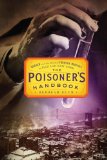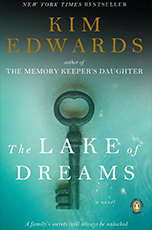Jazz Age Forensics: the Precursor to CSI
 The terms toxicology, trace evidence and DNA have become part of the vernacular thanks to television shows like CSI, Law & Order and the Court TV network. Yet, less than a century ago, forensics was a nascent discipline. Science writer, Deborah Blum, profiles two of the early pioneers in forensic science in her new book The Poisoner’s Handbook: Murder and the Birth of Forensic Medicine in Jazz Age New York (Penguin Press, 336). In 1918, Charles Norris was appointed as the first chief medical examiner in New York City. Norris, along with his lead toxicologist Alexander Gettler, made great strides in the study of toxicology, developing new tests to detect different poisons, even in small amounts. The chief’s efforts helped reform a previously corrupt coroner’s office and emphasize the importance of toxicological evidence, which had largely been ignored.
The terms toxicology, trace evidence and DNA have become part of the vernacular thanks to television shows like CSI, Law & Order and the Court TV network. Yet, less than a century ago, forensics was a nascent discipline. Science writer, Deborah Blum, profiles two of the early pioneers in forensic science in her new book The Poisoner’s Handbook: Murder and the Birth of Forensic Medicine in Jazz Age New York (Penguin Press, 336). In 1918, Charles Norris was appointed as the first chief medical examiner in New York City. Norris, along with his lead toxicologist Alexander Gettler, made great strides in the study of toxicology, developing new tests to detect different poisons, even in small amounts. The chief’s efforts helped reform a previously corrupt coroner’s office and emphasize the importance of toxicological evidence, which had largely been ignored.
Each chapter in the book focuses on an actual case from Norris and Gettler’s files that involves a different poison. Blum pays special attention to the alcohol poisonings of that era, deriding the U.S. Goverment’s participation in poisoning its citizens by tainting alcohol during Prohibition. Critic’s have praised the Pulitzer Prize-winning author’s ability to describe the dry science with lyrical prose, and craft a fascinating read. NPR’s Glen Weldon finds the book, “…a compelling, comprehensive portrait of the time and place that transformed criminal investigation, and made it much more difficult for that most insidious of murderers to escape the law.”

